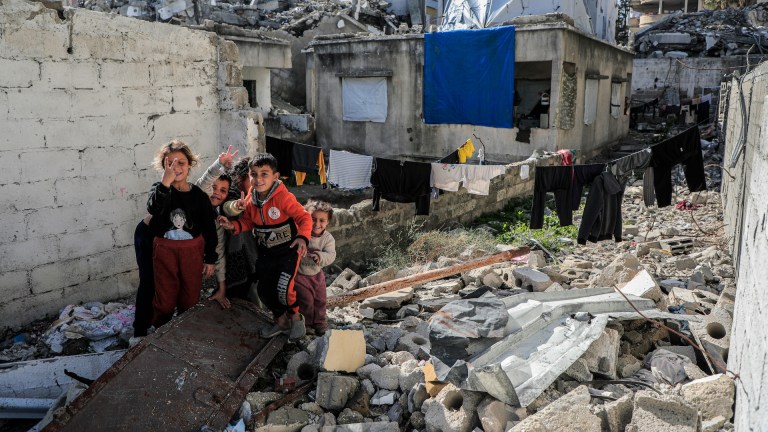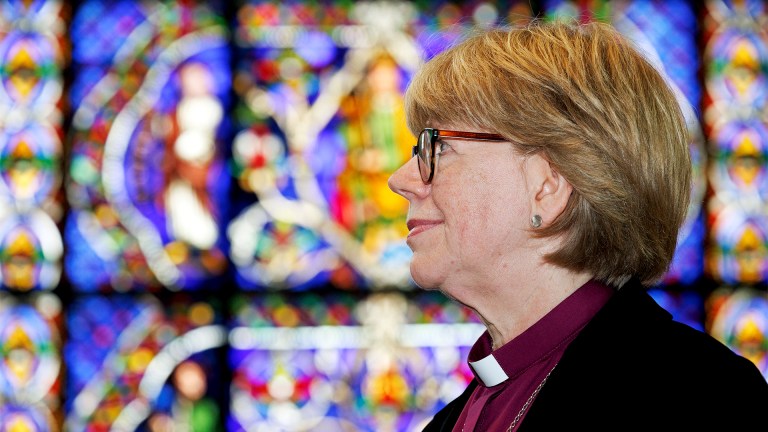Daneen described the toll this hardship was taking on her mental health, something which was highlighted by a number of the parents we spoke to, who also set out how the policy sometimes forced them to make almost impossible choices between which children’s needs should come first. This inevitably impacted negatively on the children themselves.
Rania, who has six children and is currently gaining teaching experience so she can pursue a teaching career, explained: “As a mum I feel bad because sometimes you cannot meet all the needs. You cannot, because of the financial situation, you cannot and that kind of makes you feel bad. Sometimes we’d say, ‘OK, let me get this one what they want’ and the other one will be like ‘Oh, why has she got it and why I don’t have it?’”
What our research also illustrates is the mismatch between the policy justification, which suggest families making rational choices about how many children they can afford to have (and then bring up) and the everyday realities of family life where pregnancies are sometimes the result of failed contraception or are driven by religious beliefs.
The government’s policy rationale implies that families should be able to project into the future, knowing – before they have children – whether they’ll have the resources to financially support their family for the next 18 years (and, for many, beyond). This may be true for a very small number of families, but for most families – as the pandemic has brutally reminded us – life is uncertain. A potential need to rely on social security in the future is something that is very difficult for anyone to predict. People lose their jobs, become ill or widowed in ways that are impossible to plan for.
Arguably, the social security system should be designed to help protect families against these risks. But the two-child limit’s logic is at odds with this, instead suggesting that families should manage these risks themselves. Such an approach arguably could move us into an environment where making individual choice over family size is the preserve of only the very rich.
Advertising helps fund Big Issue’s mission to end poverty
Every year that the two-child limit remains in place, more and more families will be affected. Child Poverty Action Group estimates that by the time the policy is fully rolled out, more than three million children will be directly impacted by the limit, driving down the income levels of 800,000 families.
The two-child limit is arguably another policy which fits part of a broader picture of what Professor Suzanne Fitzpatrick characterises as ‘destitution by design’. The two-child limit is a poverty-creating and poverty-increasing policy, by its very design affecting young children and their families, and severing the link between assessed need and entitlement.
Last week, the Supreme Court ruled on a challenge to the government brought by two single parents affected by the policy, with support from Child Poverty Action Group. The case against the government argued that the policy contravenes human rights legislation, with two single parents arguing that the policy discriminates against women, children, larger families and religions that do not believe in contraception. The supreme court ruled in favour of the government, even though it accepted that the policy does indirectly discriminate against women.
But, delivering the court’s verdict, Supreme Court chair Justice Reed argued that there is an “objective and reasonable justification” for the discriminatory effect of the two-child limit; which is to “protect the economic wellbeing of the country”. But a country’s wellbeing is not improved by a policy that strips children and families of the financial support needed to meet their basic needs.
Today, we learned just how many families this policy is affecting. Without reform, next year, this number will only grow further. Because of the policy’s existence, every time a child is born into an affected family, the entire family has to go without.
Advertising helps fund Big Issue’s mission to end poverty
Dr Ruth Patrick and Dr Kate Andersen are researchers for the benefit changes and larger families study. The project has been funded by the Nuffield Foundation, but the views expressed are those of the author and not necessarily the Foundation.









